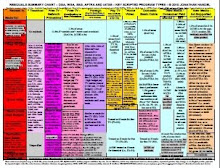After a year and a half of
Unfortunately not.
Thus, the cycle of anxiety, distrust and failed bargaining may begin again. And so on when those renewals expire three years later, and again three years after that, and so forth.
What to do? I suggest that
The function of the Working Group would be to analyze and report on developments in new media and the possible resulting effect on existing labor agreements and relationships. The goal would be to track those changes on an ongoing basis and generate various options for addressing them in the collective bargaining agreements.
By doing this work on an ongoing basis, it might be possible to reduce the paroxysms of last-minute activity that characterize the negotiating process today. And, by conducting this work jointly, it might be possible to bring the various unions, and management, onto the same page in their subsequent negotiations: that is, to ensure that everyone has a common knowledge base from which to work.
To do its work, the committee should meet quarterly or even monthly. It will need research support (sharing of data) from all parties, and a budget for purchase of research reports and other such expenses, consultants as necessary, and perhaps a staff person who would travel regularly to Silicon Valley. The committee would build relationships with major players and information sources—agencies, attorneys, other guilds, academics, research firms, tech companies, and the like.
Portions of this article previously appeared December 14, 2007, as Memo to DGA - Please Propose a Tri-Guild New Media Adjustment Committee.
———————
Subscribe to my blog (jhandel.com) for more about SAG, or digital media law generally. Go to the blog itself to subscribe via RSS or email. Or, follow me on Twitter, friend me on Facebook, or subscribe to my Huffington Post articles.

